In 1970 Thomas Bayrle, a very famous German artist whose work has always been inspired by fundamental, albeit critical, concepts of consumerist production processes, created the work “American Dream” (Chrysler), a large wallpaper that obsessively reproduces the logo of the famous brand, transforming it into an icon of capitalist progress and industrial production. The artist, however, was unaware that a few years later (2014) the Fiat group would acquire Chrysler, thus unifying into a single whole the capitalistic and automotive symbols that were the object of all his research, and he was equally unaware that this imaginative work, blatantly Pop Art, would have opened the exhibition dedicated to him at the Lingotto, the former headquarters of Fiat and now of the Pinacoteca Agnelli.
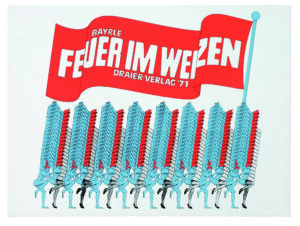
Thomas Bayrle, Feuer im Weizen, 1970, silkscreen on paper, 47 × 64 cm, courtesy Thomas Bayrle and neugerriemschneider, Berlin, ph. Wolfgang Günzel © Thomas Bayrle, by SIAE 2023
Already from the first room of the “Form Form Superform” exhibition it is absolutely intuitive to understand which elements Bayrle has investigated on his journey and how these fit perfectly with the environment in which they are hosted (on the floor above the one in which the exhibition takes place, prototypes of one of the most iconic cars ever, the legendary Cinquecento, which brought prestige to Fiat allover the world, are on display). The “superforms” referred to in the title are recurring images inspired by the topoi of the German artist’s work: they are small images which, reproduced dozens of times, create the starting shape in large size. Among the works of this type that completely colonise the room entitled “Superform Superstar”, the figure of Gianni Agnelli appears several times: he is considered by the artist an iconic figure of Italian’s capitalism and depicted with this methodology which at the same time highlights the protagonist and underlies the repetitive and mechanical gesture of the Fordist assembly line on the basis of automotive production.
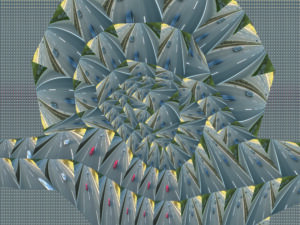
Thomas Bayrle, Autobahnkreuz, 2007, single-channel digital video, audio, color 24”, courtesy Thomas Bayrle and neugerriemschneider, Berlin, ph.Thomas Bayrle © Thomas Bayrle, by SIAE 2023
Gianni Agnelli’s figure is also revisited by Bayrle in 2023, the year in which “Gianni Agnelli aus iPhone” version of the superform dedicated to him is interpreted by an iPhone pattern which makes it particularly current, underlining how much the mass consumption has embraced other technological goods, such as smartphones, aligning themselves with cars in the current consumerist imagination. Despite the modernity of Bayrle’s work which ranges from Pop Art to the Conceptual and which above all with superforms has paved the way for the same repetition work that is currently obtained with pixels, the artist’s practice is influenced by all the craftsmanship which the author himself had learned by working in the textile industry and above all by dedicating himself to graphics for many years. Most of his works are painted by hand or in any case with highly artisanal methodologies, such as “Madonna Mercedes” (1989) in which the artist painted on latex, then stretched the base material and subsequently imprinted on it the image.
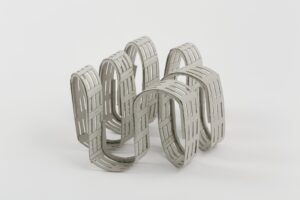
Thomas Bayrle, Kleines Conveyor Belt, 2007, pencil on cardboard, 15 × 15 × 19 cm, courtesy Thomas Bayrle and neugerriemschneider, Berlin, ph. Wolfgang Günzel © Thomas Bayrle, by SIAE 2023
This highly complex process, which requires a specific support team to produce the work, places Bayrle in that typology of artists who willingly work in a team, also thanks to long experience as a teacher at the Frankfurt design school. Manual work is also the main characteristic of other works, such as “Mao and The Machine”, which bring Bayrle’s attention back to China and the behaviour of the masses in relation to sporting events or once again linked to assembly lines. In this case, the work is characterised by an electric mechanism in which the individual protagonists move, bending as in collective sport’s choreography. The distinctive element is the uniqueness and precision with which the smallest details of the individual bodies involved in the general choreography are painted. The figure of Mao at the centre of the work, also painted, is equally worthy of note and also positioning the communist leader among the political icons from the last century, as he was depicted by Warhol himself in his very famous painting representative of American Pop Art.
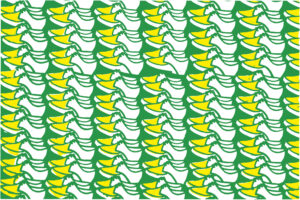
Thomas Bayrle, Schuhe, 1967, silkscreen on wallpaper, variable dimensions (single element 40 × 59 cm), courtesy Thomas Bayrle, Gladstone Gallery, New York and neugerriemschneider, Berlin, photo Thomas Bayrle © Thomas Bayrle, by SIAE 2023
However, the German artist’s interpretation of consumerist symbols deviates from the dominant Pop Art theme and is animated by a strong artistic and inventive planning. Religion and capitalism are in fact united by a sort of connection between spirituality and seduction and both trigger mass movements. For this reason, the trajectories of the cars that populate the large motorways reproduce the vaults of Gothic churches and the movement of passers-by in the street in the Frankfurter wallpaper (“Frankfurt” 1980/2008) is similar to that of the individual units of a genetic code, but at the same time recalls aesthetically the meshes of the stained glass windows of the Church of Santa Caterina, also in Frankfurt. These references lead back to the fetishes to be venerated in consumer societies, creating a sacred connection between icon and litany.
Info:
Thomas Bayrle. Form Form SuperForm
03.11.2023 – 02.04.2024
curated by Sarah Cosulich & Saim Demircan
Pinacoteca Agnelli
Via Nizza, 230, Torino
www.pinacoteca-agnelli.it
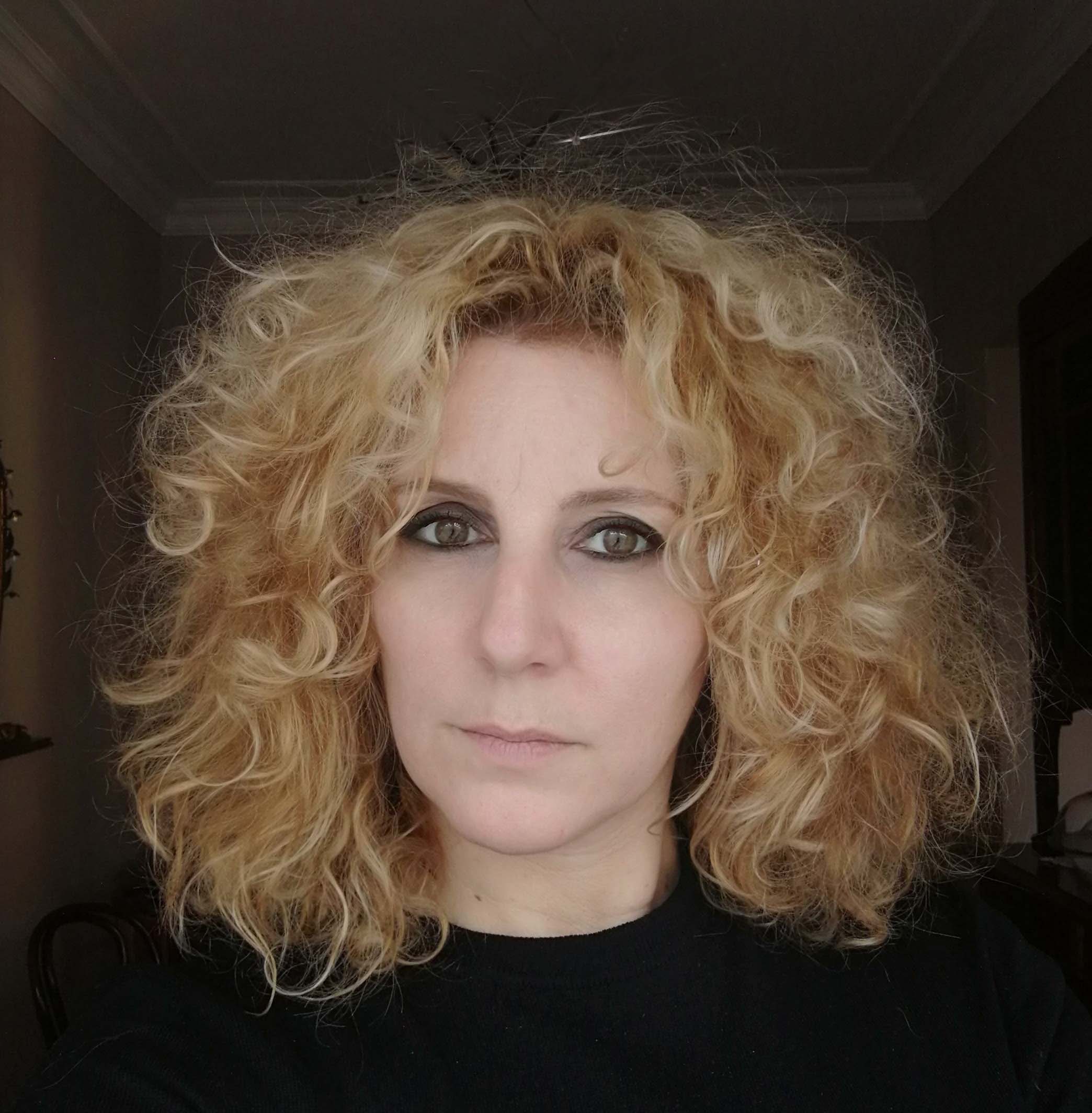
Globetrotter, passionate about literature, lover of art and photography. I never leave for a trip without taking with me a book by an author of the place where I will go. I have dreamed of moving to Paris for years and sooner or later I will!






NO COMMENT